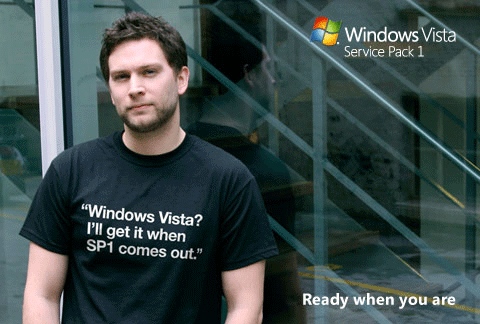This content is 16 years old. I don't routinely update old blog posts as they are only intended to represent a view at a particular point in time. Please be warned that the information here may be out of date.
A few weeks back, I found myself spending the evening in a conference room at Microsoft’s UK headquarters, listening to a presentation about software licensing. For those who say I should get a life – you’re probably right and I’m sure there are better things that I could have been doing on one of the UK’s rare sunny evenings, but I’ve missed this session before and, whilst I have a pretty good grip on the technology, it’s often handy to understand a bit about the minefield that is Microsoft’s software licensing policies.
I learnt too much that evening to repeat here in one blog post, so I’m planning on writing a series on this subject. This post is part one, in which I’ll attempt to explain the basic licensing concepts around clients and servers.
All Microsoft software products (even those offered free of charge) are subject to a license to use the software – an end user licensing agreement, or EULA. For many products, there are client and server components – and it’s important to license the operating system as well as the application.
Common mistakes are that Windows client (e.g. XP or Vista) licenses include connections to Windows servers – in fact, a client access license (CAL) is required to use Windows Server functionality. Similarly, Microsoft Outlook is included within the Microsoft Office system but not the connection to an Exchange Server system to access e-mail and other collaborative technologies.
A CAL gives a client the right to access the services of the server. It is not software and is not “installed” on a server (although it may be recorded in certain circumstances). In addition, only one CAL is needed for a given device or user to access a server, regardless of which servers it is accessing.
When considering client access licenses, for many products, there are two models:
- Per-seat licensing – with a CAL required for each device that connects to the server.
- Per-user licensing – whereby a user CAL is covers the total number of devices owned by a user who accesses or utilises the server service, regardless of the number of devices that they use.
Whilst user and device CALs cost the same as one another, for many organisations, a mix of per-seat and per-user licensing is appropriate – for example a sales team with a mixture of notebook PCs and mobile devices could use per-user licensing to cover all of their many devices whereas a warehouse with many users sharing a PC, or an office with shift workers would be better served with a per-seat model.
Per-seat licensing is available for Windows Server, Exchange Server, Office Communications Server (OCS), Office SharePoint Server (MOSS), Project Server, SQL Server and Small Business Server (SBS).
The important thing to remember is that CALs are associated with a particular product version and that it’s the server that defines the CAL version that is required – i.e. when a Windows Server 2003 machine is upgraded to Windows Server 2008, the CALs must be upgraded too; however, in a mixed environment, CALs can be used to connect to servers running downlevel operating systems.
For volume license customers (only), a core CAL suite is available covering Windows Server, Exchange Server, Office SharePoint Server and System Center Configuration Manager. Always sold with software assurance, the core CAL is less expensive than buying all of the individual CALs (approximately 2-3 times the price of an individual CAL).
Microsoft confused many customers with many of the 2007 products (e.g. Exchange Server 2007) by introducing a new CAL model with a standard CAL for basic functionality and an enterprise CAL for more advanced functionality (e.g. Exchange Server 2007 Managed Folders). The important points to remember are that:
- The standard and enterprise CALs (a poor choice of nomenclature, in my opinion) have nothing to do with whether the server application is a standard or enterprise edition product – i.e. an enterprise edition product is not required in order to use an enterprise CAL and enterprise or standard CALs can be used for either enterprise or standard edition products (if this is confusing, it may help to think of standard and enterprise CALs as “basic” and “advanced” respectively).
- Enterprise CALs are additive – i.e. a standard CAL is required as well as the enterprise CAL (an enterprise CAL “adds to” the functionality associated with a standard CAL).
It’s also worth noting that if a user connects to a server product there is no enforcement of standard or enterprise features. As with all licensing, the responsibility is with the customer to correctly license their software although, from a technical perspective, some advanced features need to be enabled manually and this would present an opportunity to record the use of enterprise functionality.
Select and Enterprise customers can buy an Enterprise CAL (ECAL) suite for twice the price of the core CAL. This includes:
- Core CAL (with each component counting as a standard CAL).
- Forefront Security Suite.
- System Center Operations Management license (a CAL to allow a client to be managed using System Center Operations Manager).
- Windows Rights Management Services CAL.
- Office Communications Server standard and enterprise CALs.
- Office SharePoint Server enterprise CAL.
- Exchange Server enterprise CAL.
The ECAL suite is always sold with software assurance and customers without a Select or Enterprise agreement can buy enterprise CALs for MOSS and Exchange Server to top-up their Core CALs.
In the next part of this series, I’ll look at products that are licensed without CALs (e.g. per-processor licensing and special cases external connectivity and hosted environments).

 Finally, I stumbled across what has to qualify as
Finally, I stumbled across what has to qualify as